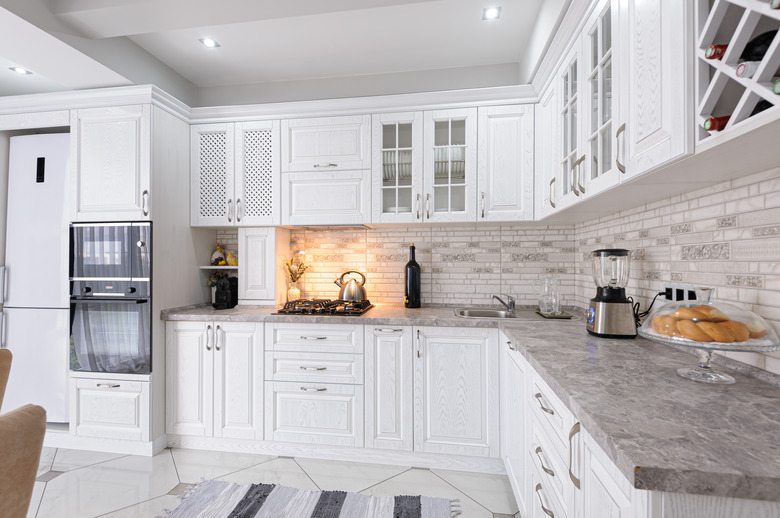How To Adjust The Temperature On A Hotpoint Refrigerator And Freezer
A popular appliance infomercial of the '90s boasted that the owners could "set it and forget it," and it often feels like this law applies to fridges and freezers, because they're such constants in the modern household. Unfortunately, sometimes fresh foods freeze or the freezer isn't quite the right temperature to keep the ice cream nice and firm. That's when you might stand in front of your Hotpoint fridge/freezer and wonder how you're supposed to interpret a dial labelled "A" through "E" for temperature values.
What Temperature Should it Be?
What Temperature Should it Be?
When it comes to a fridge/freezer combo like the GE Hotpoint, you're given a dial to control each side of the appliance — it's "A" through "E" for the freezer, and 1 through 9 for the fridge. But what if the thermostat goes wonky? If you're experiencing fluctuating temperatures with your appliance, it's best to spend a few bucks on a stand-alone thermostat you can use in the fridge and freezer.
The freezer should always operate in the range of -6 through 6 degrees Fahrenheit. For the fridge, the operating range is 34 through 42 degrees F. The recommended temperatures for food safety for each is 0 degrees F for the freezer and 37 degrees F for the fridge, according to GE.
How to Adjust the Fridge
How to Adjust the Fridge
With the Hotpoint fridge, temperature settings 1 to 5 are the warm end for this dial type, with 5 being the default setting or midrange temperature, 9 is the coldest, but 0 is off. If the internal thermostat is working correctly, then the 5 should be the ideal temperature for fresh food storage. However, if your fridge is on the older side and the thermostat is faltering, you'll want to use a stand-alone thermostat and adjust the temperatures accordingly.
Once you've adjusted the temperatures, you'll have to give the fridge a full 24 hours for the changes to take place.
Hotpoint Fridge/Freezer: Freezer Settings
Hotpoint Fridge/Freezer: Freezer Settings
This dial is labeled "A" through "E." As with the fridge, the temperature values are descending, with the coldest being the "E" and "A" being warmest. The default setting is always "C."
So, if you've got your freezer set at "C" but your ice cream is somewhat melty, you might be well-served by cranking the freezer a bit cooler to "D."
Again, like with the refrigerator, you should give things 24 hours to fully acclimate after changing temperatures.
Don't Forget External Conditions
Don't Forget External Conditions
Now that you understand your fridge temperature control, which is coldest and which is warmest, you may be flummoxed by the appliance not behaving as it should. There are two common factors that may be the reason you're experiencing inconsistencies, though, and neither have anything to do with your fridge electronics malfunctioning, thank goodness.
First, holidays are a big culprit. Is your fridge and freezer crammed with everything for your family Thanksgiving or New Year feast? That's probably your issue — a full appliance means air flow patterns are interrupted by a crowded appliance and the cooling capacity changes. Same if you're a big shopper who hits the shops a couple times a month and has the fridge go from packed to a quarter-full every couple weeks, since it means your fridge is operating at extremes and temperature changes come with each.
Second, seasonal shifts happen too. Fridges and freezers work best between 60 to 100 degrees F, but as you get to the top and bottom of those ranges, the temperature dynamic begins to change, especially if humidity is changing too.
